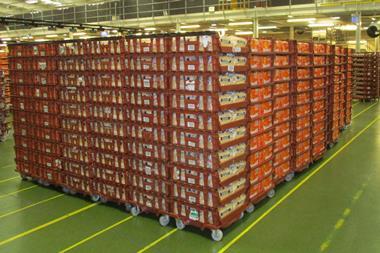Kevin Barrow, regulatory lawyer at Blake Morgan, explains the seriousness of heat stress in the workplace
Winter may not seem like an obvious time to think about the dangers of heat stress in the workplace. However, a recent study highlighted that bakers could be at risk from heat-related health problems.
The study, Worker’s health and productivity under occupational heat strain: a systematic review and meta analysis (2018), found that one in three people working in hot conditions experienced hyperthermia or more serious symptoms of heat illness.
So what is heat stress and why is it important for employers to be aware of it?
Heat stress is an unpleasant malady that occurs when the body is unable to regulate its own temperature and is caused not just by ambient heat, but also by work activity, work rate, humidity and inappropriate clothing. Symptoms include loss of concentration, muscle cramps, heat rashes, fainting, exhaustion and, occasionally, heat stroke .
Heat stress can occur in workplaces where people might suffer because of the hot environment created by the process or restricted spaces such as bakeries and kitchens, and it can have an extremely negative impact on employee welfare, performance and productivity.
Many employers will be ignorant of the dangers, and some will be unaware that failure to control workplace temperatures could put them in breach of criminal law, resulting in significant fines.
Employers should remind themselves of their legal obligation under the Workplace (Health, Safety and Welfare) Regulations 1992 (‘the regulations’), which state that, during working hours, the temperature in all workplaces inside buildings shall be ‘reasonable’.
Unfortunately, the regulations do not define what is meant by ‘reasonable’, but the HSE’s Approved Code of Practice (ACOP) advises the temperature inside the workplace should provide reasonable comfort without the need for special clothing.
%%Quote_50%%
Employers should be aware that if reasonable comfort cannot be achieved, because of hot or cold processes, then reasonable steps should be taken to achieve a temperature that is as close as possible to comfortable.
The ACOP sets out a minimum workplace temperature of at least 16˚C and, if the work involves rigorous effort, a minimum of 13˚C.
The hot processes involved in bakeries and kitchens mean a minimum temperature is unlikely to apply to employers. Unfortunately, the ACOP does not set out a maximum temperature for the workplace.
To ensure employers do not fall foul of the regulations, they would be well-advised to conduct a suitable and sufficient assessment of the heat risks faced by their employees – and would be required to do so by the Management of Health and Safety at Work Regulations 1999.
The HSE guide Heat stress in the workplace sets out several factors that employers should consider when preparing such risk assessments. These include:
- an employee’s work rate, because body heat is generated when someone is working harder;
- the working climate, such as air temperature, humidity, air movement and the effects of working near a heat source;
- the employee’s clothing and protective equipment, which could mean sweating and other means of regulating an employee’s body temperature are less effective;
- individual employees’ age, body type and any medical factors.
Employers could first take steps to address heat stress by discussion with their employees to see whether there are any concerns or signs of heat stress. If there are any signs, then employers could seek help from others, such as occupational health professionals, to determine the risk from hot environments.
Appropriate steps need to be taken to reduce or control the risks posed by heat stress. These could include controlling the temperature, alteration of the work processes, enhanced break and rehydration opportunities and increased use of mechanical cooling equipment.
More detailed advice on such matters can be found on the HSE website.
Employers need to assess how they will deal with high temperatures in their workplace. The cost of getting it wrong can be high, and remember – when people are working – none like it hot.





























No comments yet